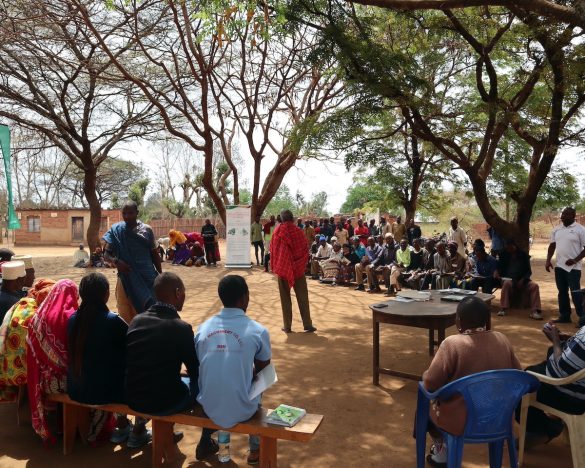Promoting dietary and income diversification through vegetable integration into maize/legume systems in Babati, Tanzania

Nearly half of the farmers in the Africa RISING action sites in Tanzania integrate vegetables into their maize-based farming systems as a strategy to increase and diversify their income and diet according to a household socioeconomic characterization survey conducted by Africa RISING.
The baseline survey covered 300 households in 10 villages across maize-based farming system households in the Babati, Kiteto and Kongwa districts where the results showed that, 53 percent male and 43 percent female respondents’ integrated vegetables with maize. Its main aim was to determine the potential for integrating vegetables into maize-based farming systems.
The farmers’ most important reason for integrating vegetables into farming systems was to increase and or diversify their income followed by nutritional/dietary needs. They also grew vegetables as a relay crop after harvesting maize as a strategy to optimize land resources by growing vegetables on residual soil nutrient and moisture
The project also organized several sensitization meetings for farmers who grew both vegetables and maize to enhance their awareness on improved as we as traditional vegetable varieties that offer higher nutritional benefits and the potential economic gains.
By the end of the meetings, 71 farmers had been trained. They were also given limited quantities of seed of a set of vegetables: Amaranths (Madira I and Madira II); Tomatoes (Tengeru 2010, Tengeru 97, and Tanya); African eggplant (DB3); Sweet pepper (PP 0042.68), to grow on their farms. To scientists’ surprise, this triggered farmer –to- farmer diffusion and spillover effect to 140 farmers within the season.
At the end of the cropping season, the collaborating farmers selected vegetable varieties which performed the best in their fields for further cultivation. Farmers’ selected varieties were used as a guide for scaling out more demonstrations on good agricultural practices
The socioeconomic characterization survey was also complemented by a pest and disease survey conducted in 20 farms per district. It combined a questionnaire to gather farmers’ pesticide application regimes and on-site assessment accompanied with laboratory based diagnostics to confirm field identifications.
The results showed that farmers frequently applied pesticides as the incidence of pests and diseases were undoubtedly a major production constraints. The farmers also desired knowledge in pest and disease identification and management so as to minimize the environmental and health risks that could result in uninformed use of such chemicals.
Story by V. Afari-Sefa,F. Ngulu and G. Ndibalema




